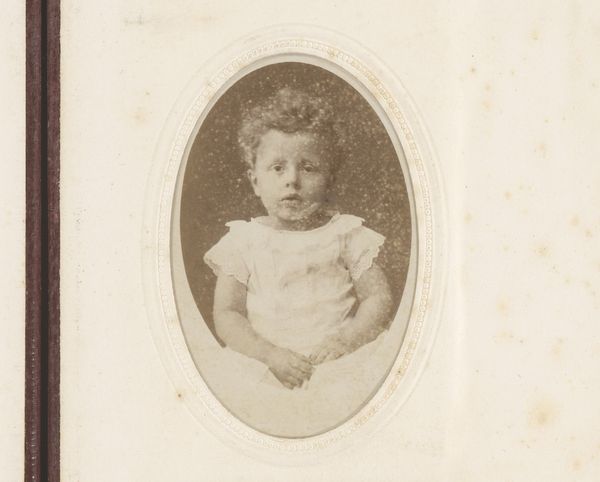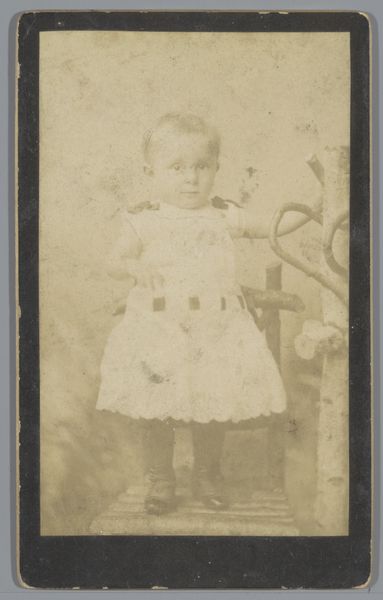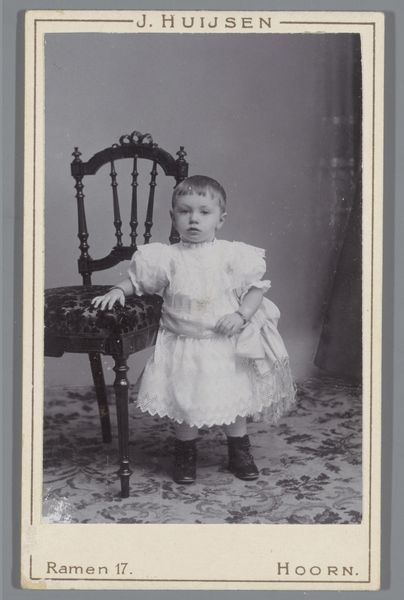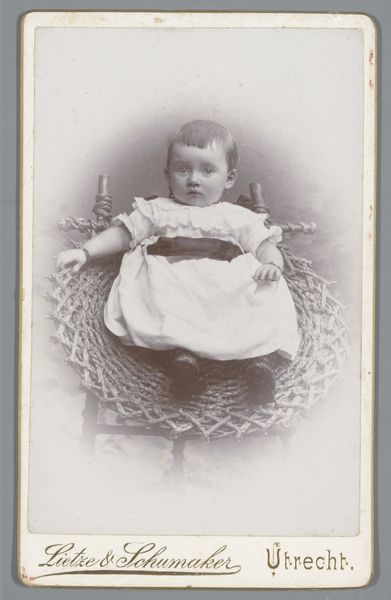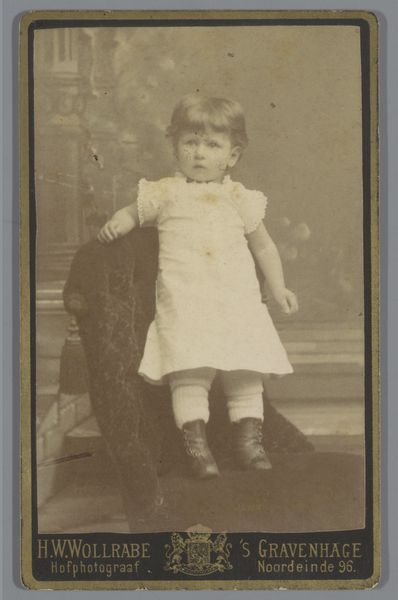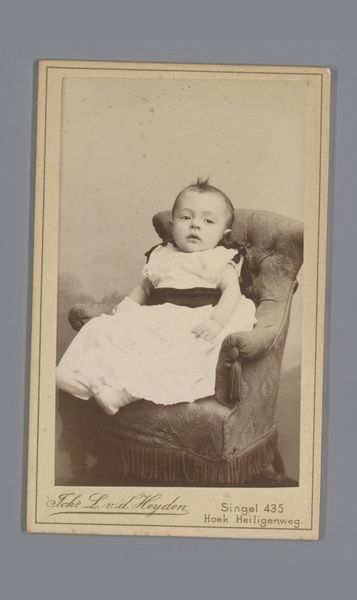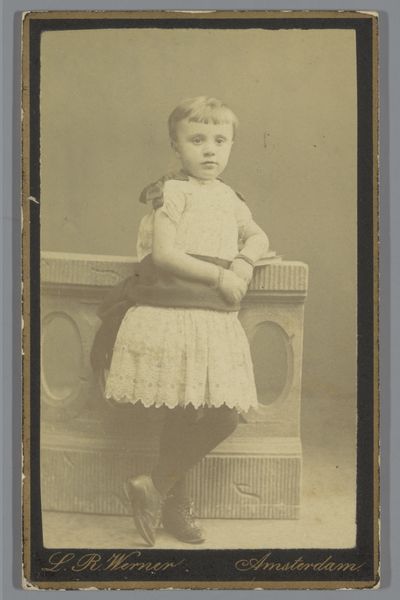
paper, photography, albumen-print
#
portrait
#
still-life-photography
#
paper
#
photography
#
paper medium
#
albumen-print
Dimensions: height 103 mm, width 63 mm
Copyright: Rijks Museum: Open Domain
Curator: Pieter Jan Nieuwstad captured this fascinating albumen print sometime between 1905 and 1910. It’s titled "Portret van een onbekende baby op een kussen," or "Portrait of an Unknown Baby on a Pillow." Editor: It has such a poignant stillness. The way the light catches the baby’s hair and the slightly blurry background gives it this dreamlike, ethereal quality, almost like a memory. Curator: That dreamy quality could also come from the stylistic conventions around still-life photography, common around the turn of the century, often playing with softness and depth of field. But look closer: The baby isn't simply sitting. It’s positioned almost formally, on a decorative plinth with an ornate pillar as backdrop. Editor: Yes, there’s something incredibly formal about the pose. Even the lace detailing on the dress is meticulous. The softness and detail contrast in ways that draw me into the social landscape of that era. What are the clues around childhood being staged in such formal compositions? Curator: Precisely. While we may view baby pictures as informal keepsakes now, photography in the early 20th century often mirrored portraiture in painting. The backdrop and pillow become symbolic staging elements, elevating the status of the sitter, even a baby. These are documents reflecting social values around childhood and memory-keeping. Editor: The symbolic weight of "unknown," too. The title emphasizes that even as a portrait, its specificity has faded. So many unknowns become part of what it captures. We view a general experience of remembering. I also can't help but feel that pillow underneath suggests both comfort, but perhaps a sense of fragility. Curator: Absolutely. That duality, that tender-but-formal tension, gives the portrait so much evocative power, acting as a portal into early 20th-century sensibilities, familial pride, and the desire to capture fleeting moments in a lasting form. Editor: Yes, what starts out seeming like just a charming portrait actually unveils this layered complexity of class, culture, and how we navigate the human experience in its earliest stages.
Comments
No comments
Be the first to comment and join the conversation on the ultimate creative platform.

